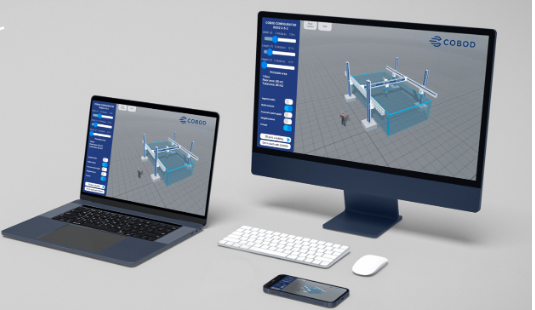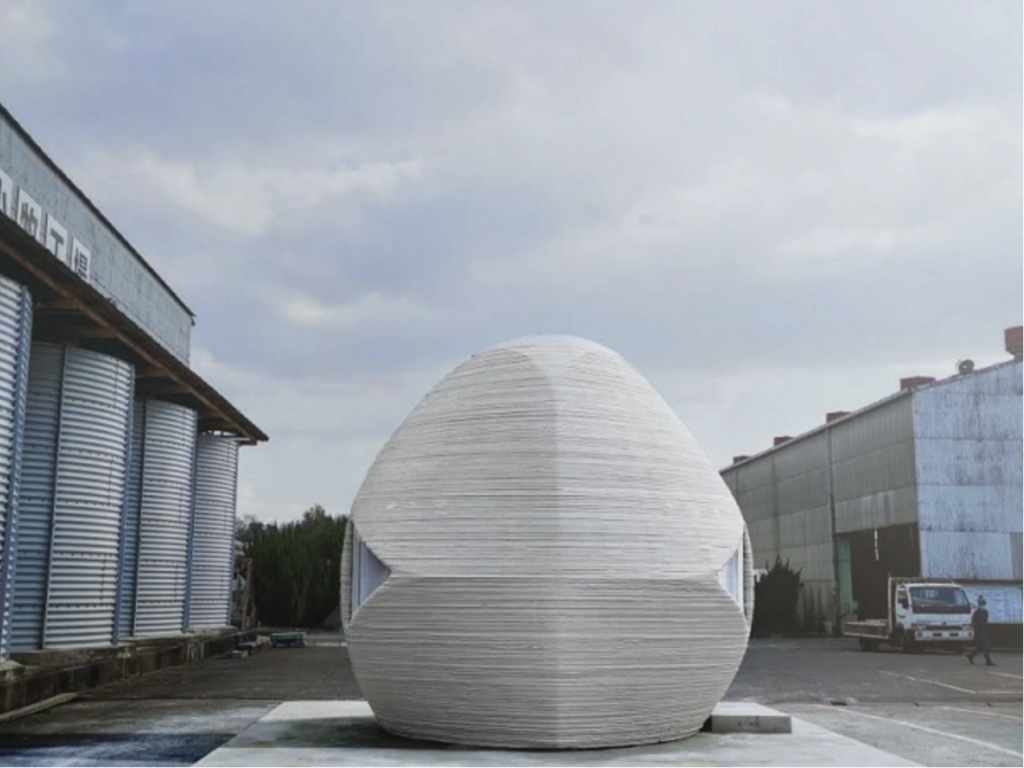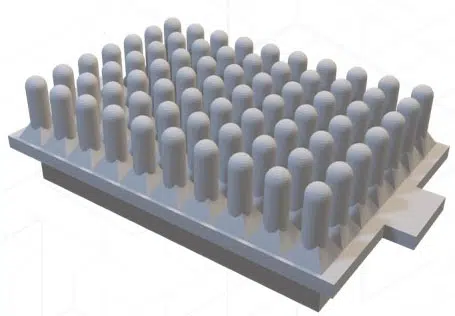Today’s 3D Printing News Briefs will start off with some construction news, as COBOD has released a 3D construction printer configurator, and a Japanese company says it’s 3D printed a house in under 24 hours. Moving on to research, the US Army has invested about $4 million in Auburn University’s AM work. Finally, researchers from Germany used a BMF microscale 3D printer to create hydrowells that can be used to culture 3D cellular spheroids in microgravity.
COBOD Releases “World’s First” 3D Construction Printer Configurator
Danish 3D construction company COBOD International has developed what it says is the first live, 3D visualized configurator for creating construction 3D printers. This new tool for real estate developers and contractors will allow them to estimate better how long it will take to 3D print a specific building and determine how much concrete material will be needed to complete the build. Users can first modify the printer’s width, length, and height and use the configurator, available as both a web app and an app for Android and iOS devices, to determine that, for instance, it can print a 170 m2 villa in just 26 hours.
“3D-printed buildings have now become a more advantageous option than conventional building methods. This is because a 3D printer saves many resources compared to conventional methods: It goes faster, requires fewer construction workers that are so hard to find these days and makes the working environment healthier,” said COBOD Founder Henrik Lund-Nielsen. “With our new Dfab solution for making 3D printable real concrete, locally sourced materials can be used to minimise the cost, transport, and delivery time as well.”
House 3D Printed in Under 24 Hours?
Japanese company Serendix Partners has a concept for 3D printed spherical houses, which look like decently attractive concrete pods. The idea is to keep the cost of these pods down enough that purchasing one would be akin to buying a budget-friendly new car. Of course, the company needs to fabricate them pretty quickly to succeed and claims that it has achieved its goal of building one of these 3D printed homes, which it calls Sphere, in less than 24 hours. What Serendix did was 3D print a 20-metric ton reinforced concrete frame for the structure, which it says was completed in 23 hours and 12 minutes; assembly of the pieces took three hours.
As far as I can tell, the interior of the 3D printed Sphere home isn’t shown anywhere, and the company also says that a lot of the construction time was spent painting the exterior and not printing the structure. If this is all true, it would indeed be exciting, but I don’t know if I believe it. At the very least, it’s a 3D printed concrete shell that could have been 3D printed in less than 24 hours but is likely unfit for a person to actually live in this way. But, Serendix, which had help from domestic and overseas partners, says that the 10 square meter structures will hopefully be sold for three million yen and will likely be used as disaster relocation shelters and camping cabins through its consortium partners. So luxury homes, these are not.
Auburn University Receives AM Research Grant from US Army

L-R: Co-principal investigators are professors Masoud Mahjouri-Samani, Shuai Shao, Nima Shamsaei, and Elham Mirkoohi.
Moving on, Auburn University has received a $4.3 million grant from the US Army to support its additive manufacturing research. With this funding, the university’s National Center for Additive Manufacturing Excellence (NCAME) will soon begin a two-year project about process, parts, and material qualification to help speed up the adoption and implementation of AM in Army operations and combat readiness.
“Material variation is what I call the ‘Achilles heel’ of additive manufacturing. It can make the qualification and certification of additively manufactured materials and parts challenging,” explained NCAME director and project principal investigator Nima Shamsaei, Philpott-WestPoint Stevens Distinguished Professor of mechanical engineering.
Shamsaei continued by noting the difficulty in ensuring the transferability and consistency of process output between different 3D printers. But the NCAME researchers hope to use their funding to achieve this through machine learning and mechanical testing.
Microscale 3D Printed Hydrowells for Microgravity Cell Cultures
Finally, researchers from the Buchmann Institute for Molecular Life Sciences (BMLS) at Goethe University used the microArch S140 by Boston Micro Fabrication (BMF) to print microscale vessels called hydrowells, used to culture 3D cellular spheroids in microgravity. Hydrowells do a better job than glass or plastic vessels of preventing individual spheroids, which put themselves into sphere-like formations to offer a biocompatible space, from “aggregating into uncontrolled sizes.”
For the Spheroid Aggregation and Viability in Space (SHAPE) experiment, supported by the German Aerospace Center (DLR) and to be performed on the International Space Station, special hydrowells with a cylindrical cross-section, funnel-shaped entrance, and either a U-shaped, conical, or truncated bottom section were required, as these shapes help achieve the formation of spheroids and long-term cell culturing. Because of its ability to offer high resolution and smooth surface finishes, microscale 3D printing was used to print convex positive molds for the hydrowells out of BMF’s strong, high-temperature HT200 resin.
“The BMF micromolds have a superior resolution and surface finish, which allows the fabrication of high-quality hydrowells to reliably produce spheroids with a consistent size,” said Dr. Francesco Pampaloni, PhD, tenured staff scientist and principal investigator, who tested the 3D printed parts for use as positive molds in hydrowell fabrication. He continued, noting that the material used to 3D print the molds can “fully withstand wet autoclaving at 121°C and 2.1 bar, ensuring the sterility of the hydrowells.”
Subscribe to Our Email Newsletter
Stay up-to-date on all the latest news from the 3D printing industry and receive information and offers from third party vendors.
You May Also Like
3D Printed Heat Spreader Could Improve Efficiency of Electronics
The low-hanging fruit for decarbonization has long been improving the efficiency of existing systems, hence the justification for LED lights and ENERGY STAR certified appliances. While such minor moves are...
3D Printing News Unpeeled: Marine Gearboxes, 3D Printed Motors and $1.7 Million in Seed Funding
UK based Equipmake just released their Ampere-220 e-axle system. The system, which is meant for high performance electric cars, was similar to one released on the Ariel HIPERCAR. It has...
CEAD Unveils 36-Meter-Long 3D Printer for Abu Dhabi’s Al Seer Marine
CEAD, a Dutch original equipment manufacturer dedicated to large-format 3D printers, has unveiled what it claims to be the world’s largest robotic arm-based 3D printer. At 36 meters long and...
3D Printed Biocomposites Could Help Reduce Marine Plastic Pollution
Concerns about the impact of plastic litter and microplastics in the oceans are at the forefront of environmental study. For decades, the marine environment has suffered from the degradation of...







































